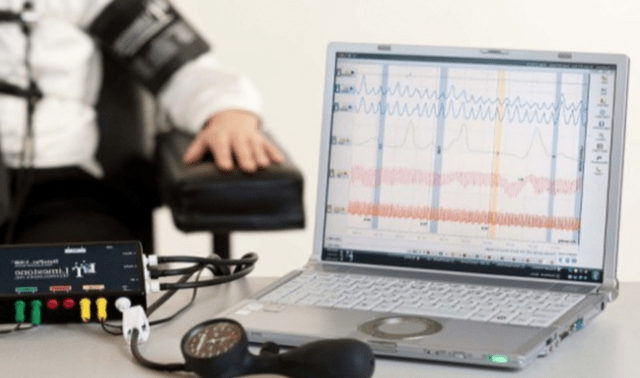The image is familiar in fiction: a suspect is sitting in a chair, connected to numerous sensors, anxious; on the side, an investigator, connected to a screen that displays the responses of the sensors, calmly follows a list of questions to assess, from the indicators, whether the answers are truths or lies. But despite what you see in movies and TV shows, the most common løgndetektor, the polygraph, is unreliable and there is no clear evidence that it works to separate the fake from the real.

Robert Trivers, in The Folly of Fools, discusses how lying is adaptive behavior. This means that being able to lie, to others and to ourselves, has evolutionary advantages over being honest all the time. We have lied since babies, even before acquiring verbal communication skills. Small “white lies”, in fact, are the social lubricant that mitigates the inevitable friction of life in groups. “The food is delicious”, “your dress is beautiful”, etc.
Problems arise when lies, rather than mitigating conflicts, cover up a breach of contract. Historically, the biggest problems have been focused on breaking the social contract – usually by covering up crimes – and adultery. Given the ability to lie and the interest in unveiling lies considered serious, a myriad of interesting techniques have been created.
Barr and Ben-Shakhar describe how Hindus caused suspects to chew rice and spit on a fig leaf; if the rice stuck to the leaf, the suspect was innocent. The Bible’s Book of Numbers suggests as a test for adulterous women to ingest a mixture of holy water and earth; if ingestion results in sagging thighs and swelling in the belly, there is guilt.
These techniques precede the polygraph, but follow the same principles: fear and anxiety activate the autonomic nervous system, responsible for activities without voluntary control. Who, however, would not be anxious and afraid in these conditions? Still, the basis for most lie detectors, from antiquity to this day, is the belief that those who are not guilty have nothing to fear and therefore will not have associated autonomous reactions.
Ido Weijers, in the book A Social History of Psychology, associates the emergence of the polygraph with the emergence of experimental psychology in Germany and with insights into its use in a forensic context. In this line, William Marston developed in the USA during the 20/30s a device that proposed to detect variations in blood pressure that would indicate untruths, the machine being perfected by John Larson – considered the inventor of the first commercially viable equipment.
The machine required a method. One should not analyze the physiological responses to just one type of question, but to different responses to different questions. This need was due to two main factors. The responses measure autonomous arousal activation, but not its causes, making the conclusion about the lie necessarily indirect. And there are individual differences in physiological responses, making the response to a similar stimulus different between people.
Among the various methodologies developed, the one that has become most relevant is the Question Comparison Test (CQT). It works more or less like this: the investigated is connected to a machine that measures his breathing, pressure and heart rate and the conductance of his skin (altered by sweat) and follows a pre-test sequence of accommodation and then something like 10 questions, separated into 3 to 4 irrelevant, 3 to 4 relevant and 2 to 3 comparative. Irrelevant are generic questions (weight, age, name) that only aim to measure baseline responses to the test. The relevant ones ask the tested subject directly if he committed the act in question (“did you rob the bank?”). And, finally, comparative questions investigate misconduct related to the subject, excluding the specific act (“have you ever taken something that was not yours”?).
The lie would be detected by the difference in physiological responses to relevant and comparative responses, with irrelevant ones being used as controls. The logic behind this method is the belief that the innocent suspect will have a stronger reaction to the comparative question than to the relevant question and, in contrast, the guilty suspect will answer the relevant question more intensely than the comparative question – since there is an obvious interest in disengaging from the specific case. The results obtained by matching the physiological responses to the questions asked are then subjected to the examiner’s subjective evaluation.


